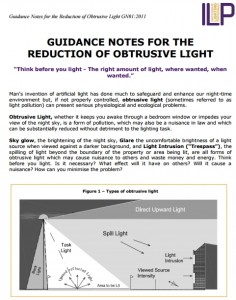Article by Paul Heames (Blogger)
According to a story on International Business Times web site, a number of objections to planning permission for Apple’s Athenry data centre have been lodged.
The story says that although Galway County Council had granted permission for the first phase of the facility, objections had been lodged which has seen the process halted.
“As soon as Apple made its plan public, about 20 to 25 complaints were filed at Galway Council by the local residents and other citizens, raising concerns that the data centre would increase noise and light pollution, flooding and traffic. They even cited the impact on badgers and bats to halt the development,” the story says.
Now this does strike one as being a little alarmist, perhaps even a bit NIMBY-ist.
“The concerns for light pollution seem a little unfounded, as a data centre, by its nature, is often a lights out facility, albeit internally, but that means there is minimal requirements for exterior lighting too, unless something is being done, such as maintenance or development”
When the data centre in Athenry was announced, in February of last year, specific mention was made of the fact that it would be sited on land that had been used for forestry of non-native trees, as in commercial forestry. Also, there was a stated aim to restore native trees to the Derrydonnell Forest, of which the land had been originally part. The project was also to provide an outdoor education space for local schools, as well as a walking trail for the community.
These are all considered elements to ease such a facility into the local community, lessen its impact and increase acceptance. Some 20 complaints would argue that this has not worked.
One wonders whether these are real concerns or whether they are merely a set of options have been thrown up to see how the efforts could be stymied.
The concerns for light pollution seem a little unfounded, as a data centre, by its nature, is often a lights out facility, albeit internally, but that means there is minimal requirements for exterior lighting too, unless something is being done, such as maintenance or development.
Traffic too, apart from the building phase, is unlikely to be an issue, as the largest data centres generally have a few hundred people at maximum working there. In fact, by the time the Apple DC is up and running, that may be significantly less. So it is hardly going to flood the local infrastructure to the point of spill-out problems.
Flooding need not be an issue, as even though the hard surfaces would represent a drainage capacity loss, it can surely be factored into the design and the restored surrounding forest should represent an increased capacity too.
As for the badgers, well, the Scandinavians are masters of the creature highways that allow animals to traverse infrastructure such as motorways or railway lines, where such things impinge on habitats. As one of the other facilities is planned for Viborg, Denmark, I can’t imagine it would take that much work to share the knowledge and allow local fauna to circumnavigate the place.
Again, with the bats, I can’t see how it would be that disruptive, as there simply isn’t that much about an operating data centre that would disrupt the habits of our leathery-winged friends.
I am not trying to be dismissive of these concerns, they well be for the most part valid, but I do hope that in dealing with them, An Bord Pleanala, Galway Council and the Government don’t get lost or side-tracked to the point where vital time is lost getting the facilities underway in an environmentally responsible manner.
Unless of course, they find significant archaeological materials with the second turn of the spade which would of course mean all bets are off.
